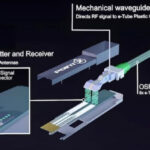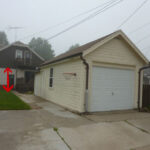When planning or upgrading your network, one of the most common questions is: Cat6 vs Cat6a — which is better? Both cable types are widely used in modern Ethernet networks, but they are not identical. In this guide, we’ll compare their bandwidth, frequency, speed, and applications, and explain when to choose SFTP Cat6a for maximum performance.

cat6 vs cat6a
Cat6 Cable Overview
Category 6 (Cat6) is an Ethernet cable standard introduced to improve upon Cat5e. It is capable of handling Gigabit Ethernet speeds (up to 1 Gbps) and supports 10 Gigabit Ethernet at shorter distances.
Bandwidth: Up to 250 MHz
Speed: 1 Gbps up to 100 m, 10 Gbps up to 55 m
Typical Use: Home networks, offices, small business setups
Cat6 is affordable, widely available, and reliable for most standard networking needs.
Cat6a Cable Overview
Category 6a (Augmented Cat6) is an enhanced version of Cat6. The “a” stands for augmented, meaning it has better shielding and performance characteristics.
Bandwidth: Up to 500 MHz (double Cat6)
Speed: 10 Gbps up to 100 m
Shielding: Often comes in shielded versions (FTP, STP, or SFTP) to minimize interference
Typical Use: Data centers, industrial networks, high-performance enterprise systems
Cat6a offers superior performance, making it more future-proof and suitable for demanding applications.
Cat6 vs Cat6a: Key Differences
| Feature | Cat6 | Cat6a |
|---|---|---|
| Bandwidth | 250 MHz | 500 MHz |
| Maximum Speed | 1 Gbps (100 m) / 10 Gbps (≤55 m) | 10 Gbps (100 m) |
| Cable Diameter | Thinner, more flexible | Thicker, less flexible |
| Shielding | Usually UTP (unshielded) | Often shielded (SFTP/FTP) |
| Cost | Lower | Higher |
| Best For | Homes, small offices | Data centers, high-interference areas |
Is Cat6a Better Than Cat6?
The short answer: Yes, Cat6a is better than Cat6 in terms of performance and shielding.
Cat6a provides double the bandwidth and can maintain 10 Gigabit Ethernet up to 100 meters, whereas Cat6 only supports 10G up to 55 meters.
Cat6a is usually shielded (SFTP/FTP), offering much better protection against electromagnetic interference (EMI) and crosstalk.
However, Cat6a is thicker, less flexible, and more expensive, which can be a disadvantage in small-scale residential setups.
When Should You Use SFTP Cat6a Cable?
If your environment has high interference from nearby power lines, industrial equipment, or dense network cabling, SFTP Cat6a is the best choice.
Data Centers: High-density servers and switches require stable 10G speeds.
Industrial Automation: Protects signals from EMI caused by heavy machinery.
Hospitals & Labs: Ensures reliable data transmission for sensitive equipment.
Future-Proofing: If you want your cabling to last 10–15 years without upgrades.
👉 Recommendation: For mission-critical networks, always choose SFTP Cat6a over Cat6. It may cost more, but the long-term stability and performance are worth the investment.
Conclusion
When comparing Cat6 vs Cat6a, the decision comes down to performance needs and budget:
Choose Cat6 if you need a cost-effective solution for home or small office networks.
Choose Cat6a if you require 10 Gigabit performance over longer distances and want a future-proof network.
Choose SFTP Cat6a if you operate in high-interference environments where shielding is essential.
In short: Cat6a is the better option for long-term, high-performance, and interference-prone networks.





